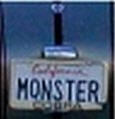 
 Main Menu
Main Menu
|
 Nevada Classics
Nevada Classics
|
 Advertise at CC
Advertise at CC
|
 January 2025
January 2025
|
| S |
M |
T |
W |
T |
F |
S |
| |
|
|
1 |
2 |
3 |
4 |
| 5 |
6 |
7 |
8 |
9 |
10 |
11 |
| 12 |
13 |
14 |
15 |
16 |
17 |
18 |
| 19 |
20 |
21 |
22 |
23 |
24 |
25 |
| 26 |
27 |
28 |
29 |
30 |
31 |
|
|
 CC Advertisers
CC Advertisers
|
|

12-21-2003, 08:34 PM
|
|
CC Member

|
|
|
Join Date: Mar 1999
Location: TACOMA,
WA
Cobra Make, Engine: Everett Morrision FE 427 so 2-4s
Posts: 2,025
|
|

 Not Ranked
Not Ranked
 Ampmeter wiring
Ampmeter wiring
I'm redoing my dash.I had problems with my old alternater and have replaced it with a fresh one tested at 73 amps. Alternater shop said to use a #4 wire . That is a lot larger than original. It appears that Battery supply to the alternater went through the ampmeter. Is that right?
__________________
Mike H
|
-
Advertising


12-21-2003, 10:33 PM
|
 |
CC Member

|
|
|
Join Date: Jun 1999
Location: Livermore,CA,
Ca
Cobra Make, Engine: Arntz/Bennett, FE with lots of shinny parts that make it go fast
Posts: 907
|
|

 Not Ranked
Not Ranked

Michael,
You didn't provide some details for your application but I'll try to help you with some general info.
For a 3 wire application with an external regulator ,The "heavy" (Bat.+) lead should be 8-10 gauge and connect to the "A" connection of the Regulator and conect to the Amp meter (you may also conect an additional lead to the Bat+ side of your starter solenoid to aid in charging). The other wires from your Alt. are the "F" which is the field, and "S" stator both attach directly to the regulator .
Some notes, you should minimize the number of connections on the "B+" wire leading from the alternator to the regulator and gauge as these will cause resistence and may lead to problems (overheated connectors, melted insulation or worse). The "I" lead from the regulator is the "Excitor" and it applies a voltage to the switching side of the regulator, a 10 ohm resistor or an indicator light can be placed in parallel for this circuit which will serve as the "idiot" light to indicate a low charge condition.
Personally, I recently changed out my Ampmeter for a voltmeter, which I find to be more useful and easier to determine any charging issues.
note: Michael I just re-read your post and to answer your question "yes, the B+ normally goes directly to the Amp gauge then to the fuse block for distribution which includes routing to the ignition SW and to the B+ side of the starter solenoid. The addition of a lead from the Alt.B+ to the solenoid which I suggested will provide a more direct connection to the battery which will improve charging since the normal routing passes through a gauge, fuse block and SW all of which draw currrent and reduce the final output to the system.
hope this helps,
good luck,
Mike
Last edited by Monster; 12-21-2003 at 10:46 PM..
|

12-21-2003, 10:54 PM
|
 |
Senior Club Cobra Member

|
|
|
Join Date: Jul 2000
Location: Chilliwack,BC,
BC
Cobra Make, Engine: F5 Roadster
Posts: 1,422
|
|

 Not Ranked
Not Ranked
 Ammeter
Ammeter
Michael.
Hi, an ammeter is placed in series with the main power lead, that means all power [ in amps ] goes through the meter. The wire has to be large enough to handle the total output of the alternator so a # 4 wire is a good choice as it will have very little resistance. A smaller wire like # 12 will have more resistance and heat up.The ammeter will go in the circuit between the battery and main fuse panel.
A voltmeter is placed in parallel or across the battery to measure voltage.
Hope this helps,
Perry.  |

12-22-2003, 06:51 PM
|
|
CC Member

|
|
|
Join Date: Mar 1999
Location: TACOMA,
WA
Cobra Make, Engine: Everett Morrision FE 427 so 2-4s
Posts: 2,025
|
|

 Not Ranked
Not Ranked

The shop tested the alternater they sold me, it'll do 75 amps. My present amp meter is a 60.It had a 10 gauge wire to alt and 12 gauge to the master switch terminal.I understand that the original alt was small but it just barely kept up. I finaly had it tested and it was hardly working.Not that many miles,maybe the small wire is partily to blame. I've started with the #4.but it's just laying on top of the engine now .It is difficult to feature that heavey wire coming in and out the fire wall ,to and from the gauge. All gauges are SW and I'm finding it hard to find anybody other than a distributer who still will have to order it and has no knowledge.SW meters aren't in any of the stores I've been in.I ordered a new speedo three years ago and a vacum gauge a year and a half ago.I went into that store today and they can't find a SW catalog"come back next monday and maybe ***** can find the catalog".The SW website doesn't show pictures of the gauges just series Like I allready knew .
So it is a 100 amp meter or go to a voltmeter and try to make it look correct.
What does the shunt do?
__________________
Mike H
Last edited by Michael C Henry; 12-22-2003 at 06:56 PM..
|

12-22-2003, 08:52 PM
|
|
CC Member

|
|
|
Join Date: Jun 2001
Location: Washington DC Metro (Virginia),
VA
Cobra Make, Engine: Classic Roadsters, Tweaked 351W, T-5Z, CRII Tech Support Team.
Posts: 1,895
|
|

 Not Ranked
Not Ranked
How closely do you want/need to monitor your amperage loading/useage during normal driving? Probably, not that much.
Use a voltmeter, instead of an ampmeter, and have an easier installation.
|

12-22-2003, 09:00 PM
|
 |
Senior Club Cobra Member

|
|
|
Join Date: Jul 2000
Location: Chilliwack,BC,
BC
Cobra Make, Engine: F5 Roadster
Posts: 1,422
|
|

 Not Ranked
Not Ranked
 Shunt
Shunt
Michael,
The shunt is in parallel to the ammeter movement. It is there to protect the sensitive meter, and let most of the amperage bypass the meter so the meter doesn't burn up, no meter windings could handle that 75 amps you have. Try some of the hot rod shops for a SW ammeter.
Good Luck,
Perry.
 |

12-22-2003, 11:06 PM
|
|
CC Member

|
|
|
Join Date: Mar 1999
Location: TACOMA,
WA
Cobra Make, Engine: Everett Morrision FE 427 so 2-4s
Posts: 2,025
|
|

 Not Ranked
Not Ranked
after doing a Stewart Warner search I was sent to -Racer Wholesell parts doesn't show any SW amp meters.and voltmeter picture is of a white face gauge. At the prices for SW I want to get it to resemble my other gauges.
__________________
Mike H
|

12-22-2003, 11:26 PM
|
 |
CC Member

|
|
|
Join Date: May 2001
Location: California,
Ca
Cobra Make, Engine: NAF 289 Slabside Early Comp Car with 289 Webers and all the goodies. Cancelling the efforts of several Priuses
Posts: 6,592
|
|

 Not Ranked
Not Ranked
Try this:
www.stewartwarner.net/
They speak our language.
Rick
Last edited by Rick Parker; 12-22-2003 at 11:34 PM..
|

12-23-2003, 11:31 PM
|
|
CC Member

|
|
|
Join Date: Mar 1999
Location: TACOMA,
WA
Cobra Make, Engine: Everett Morrision FE 427 so 2-4s
Posts: 2,025
|
|

 Not Ranked
Not Ranked
Neat site .I wish I had found it earlier. SW tech says 100% of the current goes though the amp meter. The shunt is like a fuse. I bought a SW Voltmeter. I know I paid too much but it's done.
__________________
Mike H
|

12-24-2003, 08:27 AM
|
 |
Member of the north

|
|
|
Join Date: May 2003
Cobra Make, Engine: A Cobra
Posts: 11,207
|
|

 Not Ranked
Not Ranked
Michael,
The Ampmeter is "inline" with the alternator to tell you when the battery is changeing and dischangeing. The use of #4 wire is to prevent it from getting hot and melting under extreme conditions.
You can use the Voltmeter and get an idea of the state of the battery, but it is not the same thing as the Ampmeter.
The Shunt is a device/metal plate/resistor that has a specific Ohmic reading. When placed across the leads of the meter ( or it may be built in ), the meter will be able to read an accurate current and polarity.
Just more info.
__________________
I'm a writer, feed the artist and buy a book.
|

12-24-2003, 08:41 AM
|
 |
CC Member

|
|
|
Join Date: Aug 1999
Cobra Make, Engine:
Posts: 2,888
|
|

 Not Ranked
Not Ranked
You guys are a little confused with alternator amp ratings. No alternator the size on a car can put out 60-75-140 amps. Alternaters are putting out amps per hour. A 60 amp alternator will produce 60 amps of dc current per hour.
The number 4 wire you are using is the minimum size wire for a 100 amp electric service to a house.
Any wire larger than a #10 to your amp gauge is a waste of money.
I knew 5 years of school would come in handy some day.
Cranky
__________________
SAAC member and supporter
Club Cranky charter member
|

12-24-2003, 11:08 AM
|
|
CC Member

|
|
|
Join Date: Nov 2003
Location: New Britain,
CT
Cobra Make, Engine: Size 10 Feet
Posts: 3,021
|
|

 Not Ranked
Not Ranked
|

12-24-2003, 11:22 AM
|
 |
Senior Club Cobra Member

|
|
|
Join Date: Jul 2000
Location: Chilliwack,BC,
BC
Cobra Make, Engine: F5 Roadster
Posts: 1,422
|
|

 Not Ranked
Not Ranked
 amperage use
amperage use
Cranky,
I don't know about your car but my car uses;
8 amps for the msd box
8 amps for the lights
18 amps for my electric rad fan
4 amps for my electric fuel pump
10 amps for the wipers
12 amps for the heater/defroster
60 amps constant draw
Yes I have used them all at the same time, for hours at a time on our trip to Idaho. If your alternator can't put out enough to run these then your battery will discharge constantly.
Perry.  |

12-24-2003, 12:00 PM
|
 |
Member of the north

|
|
|
Join Date: May 2003
Cobra Make, Engine: A Cobra
Posts: 11,207
|
|

 Not Ranked
Not Ranked
Gee, I could have sworn I tested alternators on cop cars to 105 Amps.
Place a big paint can looking device ( resistive load ) on the alternator and then the other lead goes to ground. Ampmeter readings I got were off a FLuke with 5 digit readout and the alternator would deliver 100 Amp... all day long.
Can got good and hot, but it was a continious draw.
And, my lights draw around 15 Amps with everything on. The radio, and instruments cost me about 12 Amps. The kicker is the 16" fan with two speeds... 27 Amps with full speed.
I am not sure about your car, but mine runs when the battery is disconnected. That means the alternator is supplying all the electricity.
Now, if I could spell, I'd really be in good condition.
What five years are you refering to?
Just my added

__________________
I'm a writer, feed the artist and buy a book.
Last edited by trularin; 12-24-2003 at 12:03 PM..
|

12-24-2003, 12:10 PM
|
 |
Member of the north

|
|
|
Join Date: May 2003
Cobra Make, Engine: A Cobra
Posts: 11,207
|
|

 Not Ranked
Not Ranked
 BTW
BTW
By the way, Mike, if you are redoing the dash, Carlingswitch has a great set of switches that look great and handle good current.
They are rocker style and have built in indicators.
If you are interested, their number is:
860.793.9281
or
www.carlingswitch.com
I used the "V-series"
Merry Xmas!!!!!!!!!!
 |

12-24-2003, 12:52 PM
|
 |
CC Member

|
|
|
Join Date: Jan 2002
Location: Northridge,
CA
Cobra Make, Engine: Arntz Cobra
Posts: 1,838
|
|

 Not Ranked
Not Ranked
Michael,
I believe 4 guage wire is way too bulky to run under the dash and unnecessary. Most car manufacturers use 10 gauge, but I like 8 gauge because of my big lights, two heaters and all the computer gear. It is important to note that the only circuit that bypasses the ammeter is the starter. It pulls over 100 amps and will fry an ammeter. I use 0 gauge welding cable for that connection, directly from the battery to the starter solenoid, then another 0 gauge from the other solenoid connector to the starter. At the standard Ford starter solenoid battery terminal (at the same connector the battery heavy wire is attached to), I run an 8 gauge wire to the ammeter negative terminal. The plus ammeter terminal gets another 8 gauge wire directly to the alternator. I run another 8 gauge wire from the ammeter plus terminal to the fuse block to run everything else. A diagram would help but I don't have one. This simple stuff is all in my head 
I hope this helps,
Paul
__________________
"It doesn't have anything on it that doesn't make it go faster."
|

12-24-2003, 03:58 PM
|
 |
CC Member

|
|
|
Join Date: Aug 1999
Cobra Make, Engine:
Posts: 2,888
|
|

 Not Ranked
Not Ranked
Guys,
It's your money waste it where you want.
Cranky
__________________
SAAC member and supporter
Club Cranky charter member
|

12-25-2003, 11:47 AM
|
 |
CC Member

|
|
|
Join Date: Jul 2000
Location: CHANNEL ISLANDS HARBOR, (Oxnard) CA. USA,
CA
Cobra Make, Engine: ERA427SC #323, 427 SO, 428 crank, 454 CI, "IM2QWIK"---ERA GT-40 #2043 Ford SVO 302 Weber 48 IDA's 400HP "1 GT 40"
Posts: 316
|
|

 Not Ranked
Not Ranked
 Cranky,
Cranky,
Is that five years of progressive learning or 1 year with 4 years of not passing??? (LOL)
Do they have have different contractors licenses in Sopranoland for low voltage (0-90v) vs. high voltage (91v->) like California C-7 low voltage vs C-10 high voltage??? Just want to make sure that you are qualified to give advice...
your buddy,
o'spotter 
__________________
"Blue to the bone"
spotterjoe

|

12-26-2003, 11:34 AM
|
 |
CC Member

|
|
|
Join Date: Jan 2002
Location: Northridge,
CA
Cobra Make, Engine: Arntz Cobra
Posts: 1,838
|
|

 Not Ranked
Not Ranked
Need lots of power for these babies:
__________________
"It doesn't have anything on it that doesn't make it go faster."
|

12-26-2003, 11:42 AM
|
 |
CC Member

|
|
|
Join Date: Jan 2002
Location: Northridge,
CA
Cobra Make, Engine: Arntz Cobra
Posts: 1,838
|
|

 Not Ranked
Not Ranked
Let's try again:
__________________
"It doesn't have anything on it that doesn't make it go faster."
|
 Posting Rules
Posting Rules
|
You may not post new threads
You may not post replies
You may not post attachments
You may not edit your posts
HTML code is On
|
|
|
All times are GMT -7. The time now is 09:44 AM.
|




















 Linear Mode
Linear Mode



